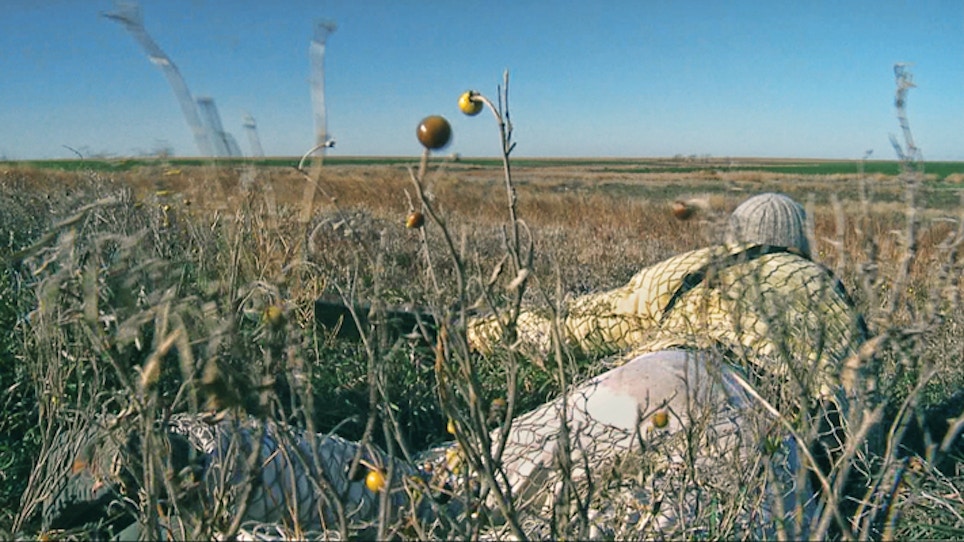Whitetail fanatic and founder of Whitetail Adrenaline, Jared Scheffler, not only bowhunts whitetails on the ground, but he does it exclusively, and on public land to boot. He also hunts primarily with a longbow. Talk about challenging.
Scheffler shares nine keys gleaned from his experiences to help you become a better spot-and-stalk hunter. Who knows? You might just add an exclamation point to your next rut hunt for a truly in-your-face encounter!
- Chasing the 10 Percent
Bowhunting mature deer on unfamiliar public land is a game of odds – very low odds. “I figure I have about a 10 percent success rate if I confine myself to a treestand,” Scheffler said. “It typically takes longer to encounter bucks, and it’s easy to get hung up on spots. That’s why we now hunt exclusively from the ground. We sort through lots of acreage to get on deer quicker. If we screw up one stalk, we move on to the next. We can afford to be aggressive on public land because it’s so abundant.” - Don’t Pattern Them
Scheffler grew up in western Wisconsin where patterning whitetails was all the rage. But when he began hunting exclusively on public land, he soon realized many uncontrollable factors play into a buck’s patternability. “Small-game hunters and other deer hunters often dive headfirst into public land, and that typically alters deer habits,” he said. “No matter how well you think you have a buck pegged, the uncontrollable factors change things instantly. Then patterning becomes wasted time.” - Stay Mobile
Mobility is the key to Scheffler’s ground-stalking success. “We move along at a pretty good clip to determine if a property is worth our time,” he said. “We’ve got thousands of public-land acres to work with, and staying mobile helps us cover more ground in less time. It’s our goal to find the best-of-the-best spots. We can adapt to shifting factors on a dime.” - Decide as You Go
Decision-making is crucial to successful ground stalks. “People want a step-by-step list of what I do, but each scenario is so different that it’s impossible to draft a one-size-fits-all plan,” Scheffler said. “Only a small amount of this hunting style can actually be taught. The rest must be learned through experience. Now, we do use sort of a systematic approach when we travel out of state. On big tracts of public land…we maintain a steady pace. But once we locate lots of fresh buck sign, we put on the brakes. Our pace depends heavily upon sign we’re finding and deer we’re seeing.” - It’s Not Over When Deer Snort
Most hunters quickly throw in the towel when deer snort, but Scheffler stays in the game. “We’ve had multiple encounters where we bump a doe, she runs a short distance, stops and snorts incessantly,” he said. “We hunker down and don’t move. During the rut, snorting actually tells distant bucks does are in the area, and they often come to check things out. Deer always snort at stuff, so I don’t believe mature bucks feel threatened until the deer that’s snorting runs away.” - Prairie Vs. Timber
Your approach must cater to the terrain you’re hunting. “When we hunt wide-open grassland, we spend way more time in the vehicle,” Scheffler said. “Prairie deer travel great distances. A vehicle is the only way to keep tabs on traveling deer. And we rarely walk through the prairie without first spotting a mature buck.” In contrast, deer in timbered areas are less visible from roads, so Scheffler and his crew spend more time on foot to locate bucks. “We get right in there, which I really like, and try to get a visual so we can move in for a stalk,” he said. “That’s our goal.” - Play The Wind
Because Scheffler and his team are in and out of vehicles, they don’t practice a strict scent-control regimen. “With the way we hunt, it’s nearly impossible to eliminate our scent while remaining mobile and functional, so we play the wind the best we can,” he said. “Occasionally, we’ve made aggressive moves where the wind wasn’t entirely favorable, but the longer your scent floats toward deer, the more likely you’ll get busted.” - Call Sparingly
Whether it be grunting or rattling, deer have a tendency to approach the exact location from which calls are made. This means a buck could approach head-on and never offer an ethical shot angle before leaving. Scheffler uses calls only under very specific circumstances. “If I already have a visual on a buck, I find my odds are better to sneak in instead of calling. However, there are times when I know a stalk isn’t possible, so I’ll call as a last-ditch effort.” When Scheffler does call, he often kicks leaves around and breaks brush to add realism. - Try A Decoy
Scheffler occasionally uses a decoy that hides his approach and challenges bucks. “We found the decoy particularly beneficial in situations where bucks are locked down with does,” he said. “But you have to get within his comfort zone before you show the decoy, otherwise the doe usually flees with the buck in tow. Despite a decoy’s effectiveness, Scheffler warns there are dangers with using one. “We don’t use decoys during open firearm seasons and only use them in open areas once we’ve evaluated our surroundings. You have to remember there are other hunters out there too, and you don’t want to risk life or limb over a deer.”






